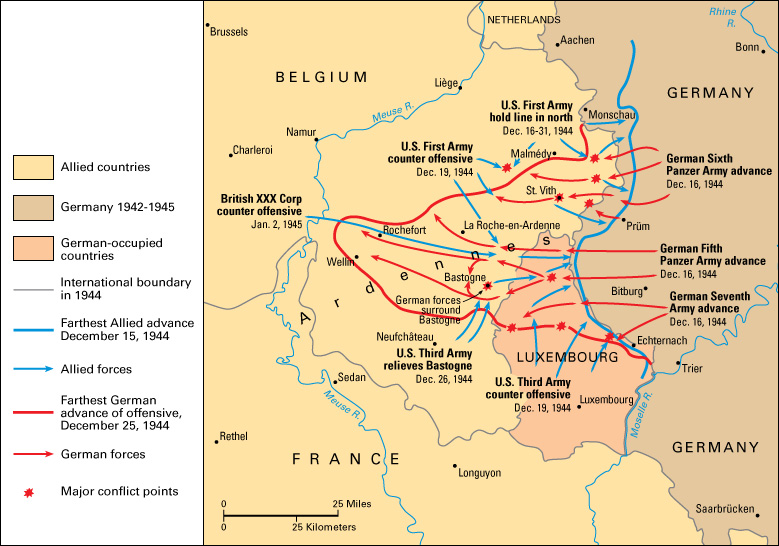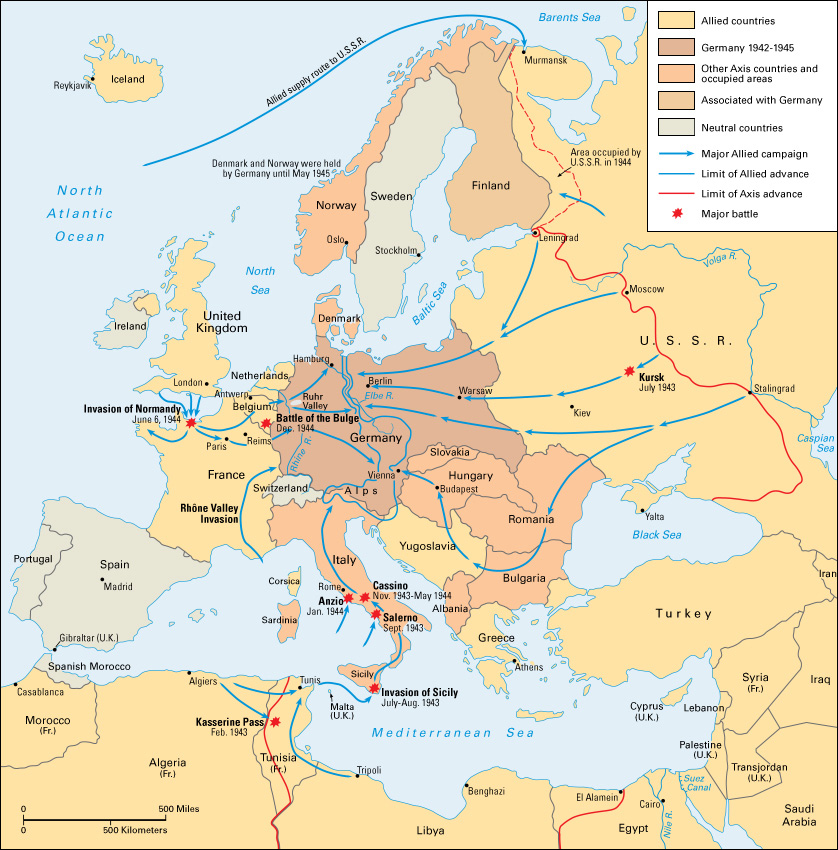Bulge, Battle of the, was the largest and costliest battle fought by United States troops during World War II (1939-1945). The battle started in December 1944 with a surprise German attack on mostly American forces in the Ardennes Forest in Belgium and Luxembourg. The German goal was to smash through the American forces and capture the important Allied supply port of Antwerp, Belgium. The attack was ultimately unsuccessful. However, it showed that Germany, despite recent defeats, was still capable of fierce resistance. The battle’s name comes from the bulge, or bump, that formed in the front line after the Germans pushed back some of the U.S. forces. The battle is also called the Battle of the Ardennes.

On Dec. 16, 1944, German troops and nearly 1,000 tanks attacked U.S. forces along a 75-mile (121-kilometer) front in the Ardennes Forest. The surprise attack drove the Americans back westward, creating the bulge in the front line. Poor weather limited American air support as German troops overwhelmed the outnumbered defenders. Pockets of U.S. troops—notably at the Belgian road junction of Bastogne—held out against artillery and ground attacks. The isolated soldiers suffered from extreme cold, heavy snow, and a lack of ammunition and medical supplies.

The Germans, however, lacked the troops and fuel to complete a major breakthrough. Within two weeks, the Americans stopped the Germans near the Meuse River, around the western edge of the Ardennes. Clearing skies allowed U.S. warplanes to attack enemy planes and positions. American forces on the ground soon received new supplies. Counterattacks began driving the Germans back. American troops that had become surrounded at Bastogne received support on December 27. By late January 1945, the original line was restored.
The Battle of the Bulge cost the Americans around 80,000 casualties (soldiers killed, wounded, captured, and missing). British troops on the northern end of the line suffered another 1,400 casualties. German losses were estimated at about 100,000. The attack severely reduced Germany’s supply of soldiers and equipment. Still, bitter fighting continued until the German surrender on May 8, 1945.
See also Malmédy Massacre ; World War II (The Battle of the Bulge) .
